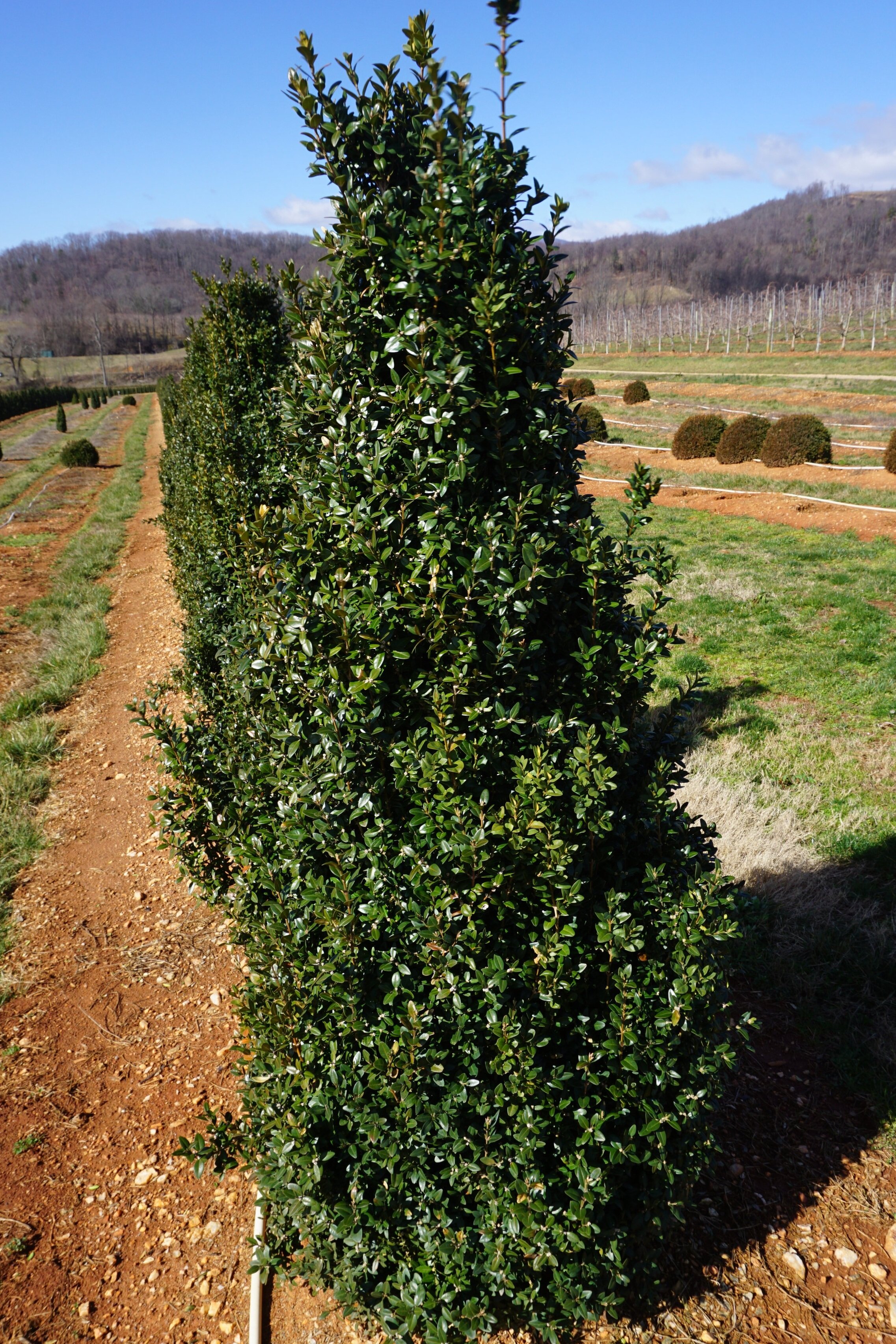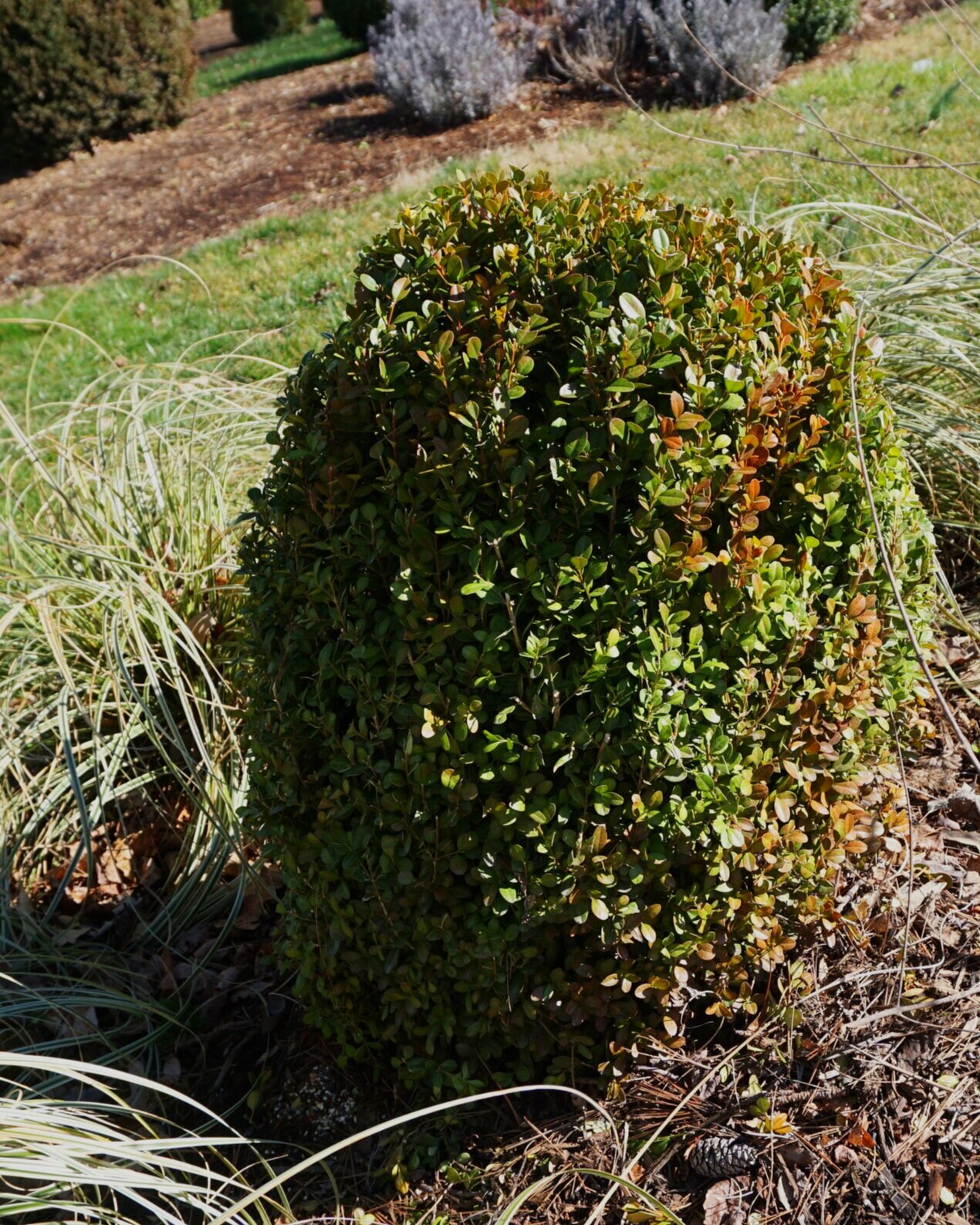This tall boxwood with some winter color and shaggy branches before its annual pruning.
Pruning is an essential part of plant upkeep and an excellent method of preventative maintenance for both young or more established plants. Most ornamental plants benefit from annual pruning, and boxwood are no exception. There are many benefits both for the overall look and health of the plant, making it important to establish a pruning schedule for boxwood in any landscape.
One of the most common reasons to prune is to shape up boxwood and provide a cleaner more defined appearance. Boxwood are characterized by the structure they provide to gardens, and pruning helps to maintain a clean shape. Early spring, before boxwood begin to flush, is the best time of year to prune. Any old winter color, or tips that have been burned over the winter season, can be trimmed away and will disappear after the spring flush.
Not only is it important to prune, but proper pruning techniques are crucial to long-term success with boxwood and may differ slightly with each cultivar. It is important to choose the correct cultivar to avoid the need for excessive pruning. Before and during annual pruning, proper sanitation of necessary tools is important. Any tools should be properly cleaned with alcohol, bleach, Lysol® or some other disinfecting solution before and after working with boxwood to lessen the possibility of spreading disease.
Buxus ‘Dee Runk’ before annual pruning.
The same Buxus ‘Dee Runk’ after annual pruning.
As mentioned above, the best time to prune boxwood is in the late winter to early spring, before the plant breaks dormancy and begins flushing. This is typically late February to mid-March in central Virginia. Late winter/early spring pruning minimizes the time between pruning and new growth as well as stimulating a strong spring flush. Also, Boxwood Blight tends to be much less active in cold temperatures.
This freshly pruned boxwood had its winter color pruned off and is ready for its spring flush!
If you are looking for a more manicured look, some gardeners like to prune in late spring, after the spring flush to achieve a more formal shape. Mid-summer and early fall pruning stimulate late fall growth that may be burned by frost or early winter freezes. Waiting until early winter might not be detrimental; however, it leaves pruning scars on the leaves until the spring flush is initiated.
Cultivars that are more dwarf or have very tight habits benefit from annual thinning to open up the inside of the plant. Thinning is typically done by reaching into the plant and breaking or cutting out branches with hand pruners. These branches can be 6-10 inches long on larger cultivars, or only a couple of inches on a dwarf cultivar. This will leave pockets or holes in the plant for air and sunlight penetration. Using hand pruners will result in a cleaner cut and lessens the possibilities of disease introduction. Any cultivars that are sheared regularly will benefit from thinning to lessen disease susceptibility.
Larger and more vigorous cultivars are generally tolerant to shearing or more radical pruning techniques. Use loppers or shears to drastically reduce overall plant size on vigorous plants, taking care to leave one-half to two-thirds of the foliage undisturbed. This foliage will produce energy the plant needs to recover. The plant should develop new foliage along the bare stems. Full recovery may take several seasons. Plants that require more drastic pruning may need to be pruned over several years to reduce the overall size in steps and not jeopardize the plant’s health. To minimize radical pruning, do not select large cultivars for applications where small cultivars would be more suitable.
Large Pruning shears can be used for larger, more vigorous varieties.
Establishing pruning as part of the overall maintenance of your boxwood encourages healthy growth on both young and more established plants. Whether it is to neaten the plants appearance, rejuvenate an overgrown shrub, or help maintain a healthy environment, annual pruning is a key part of your success with boxwood.





